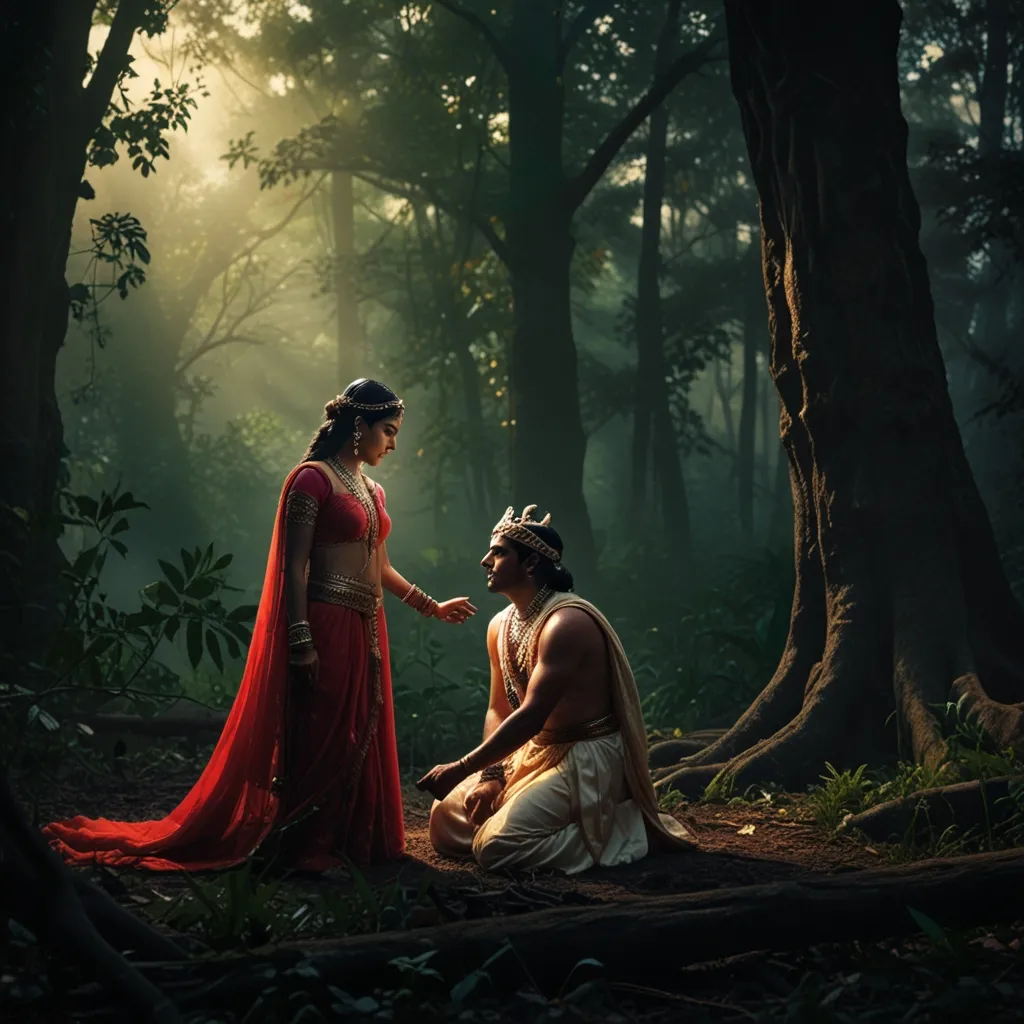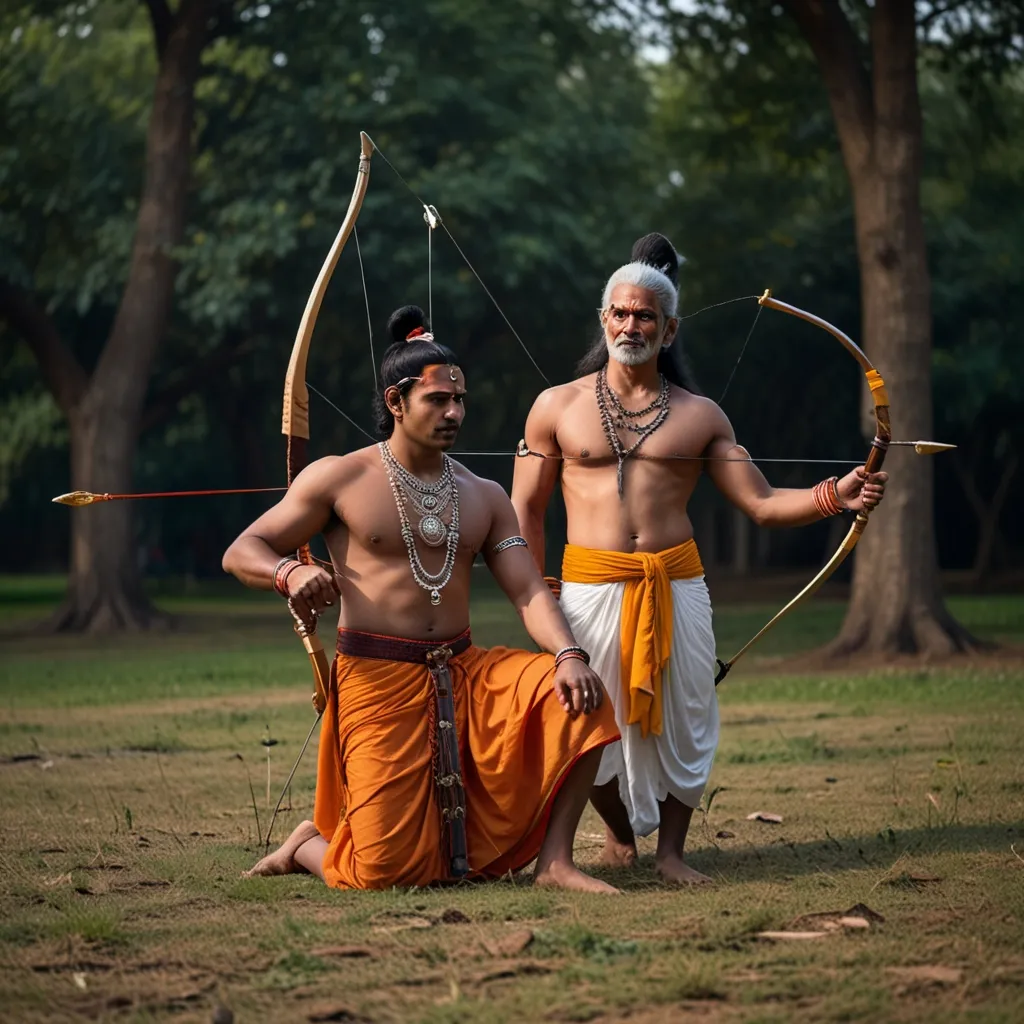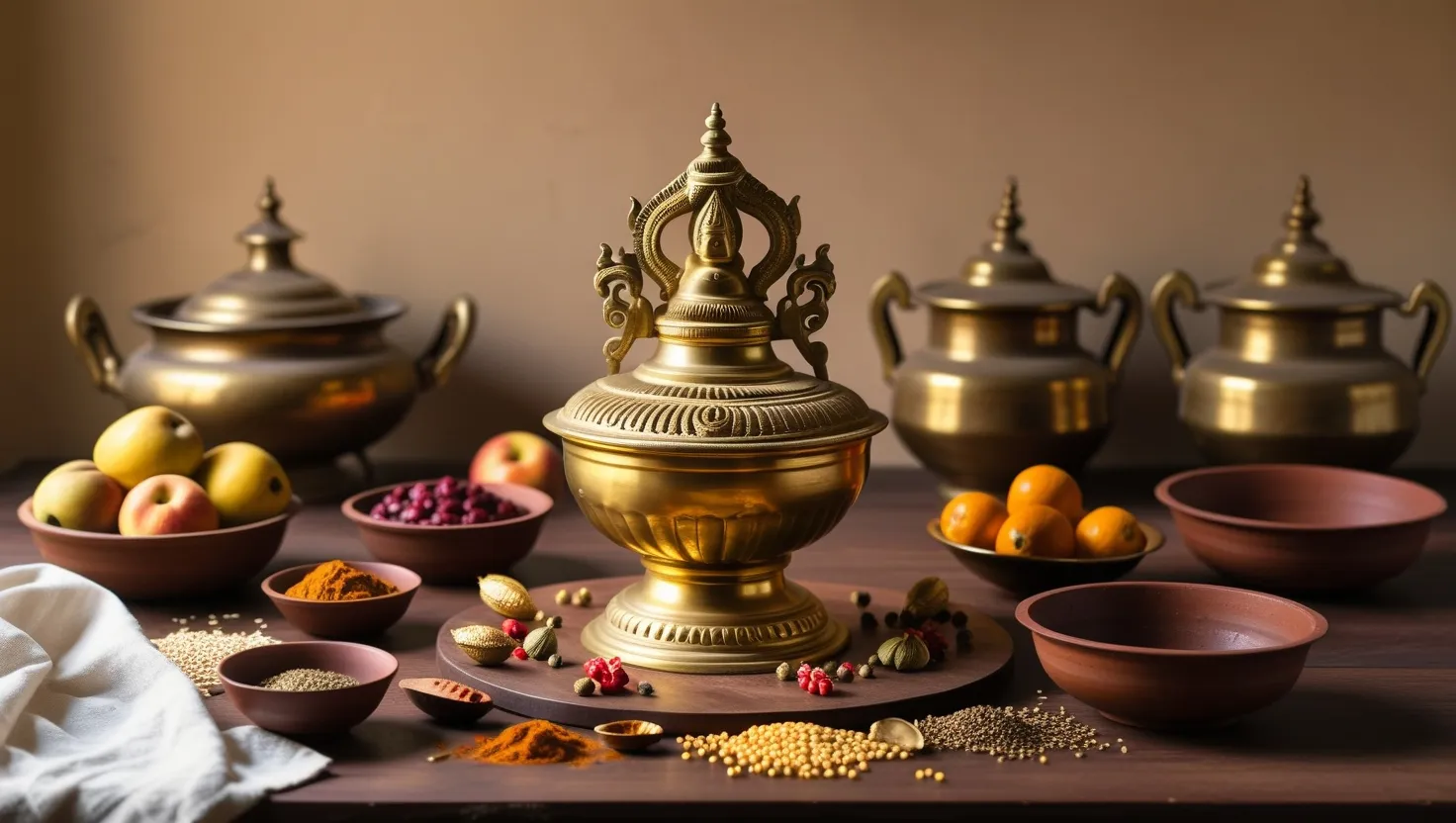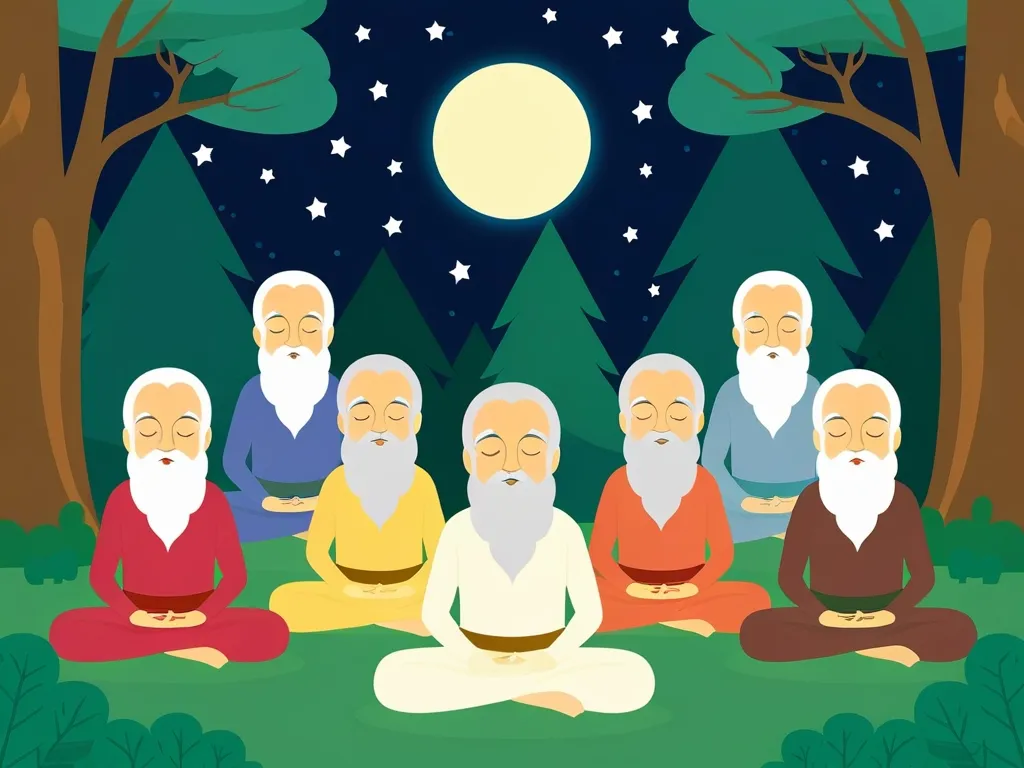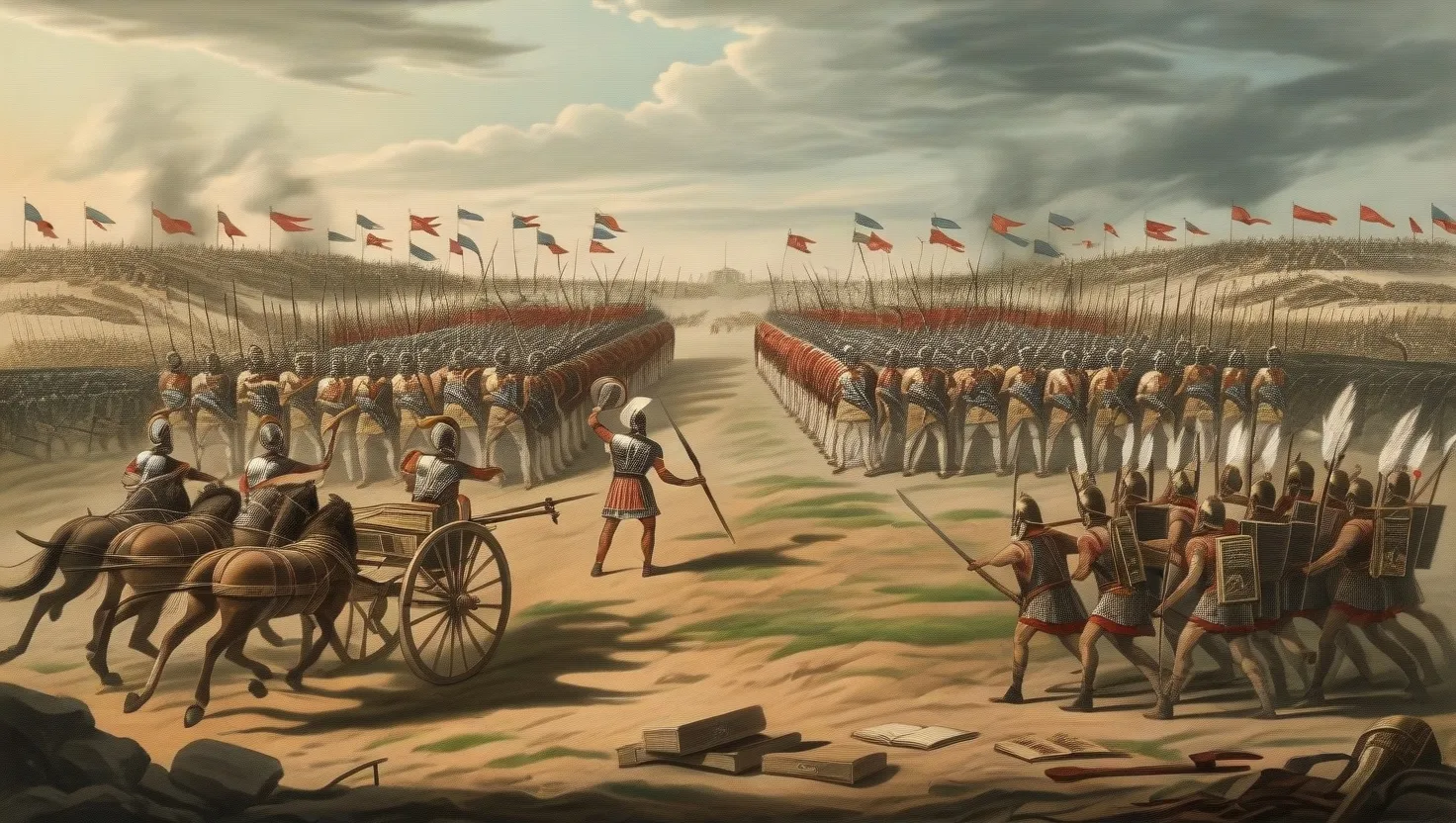In the ancient tale of Savitri and Satyavan, we’re taken on a journey of dedication and the formidable strength of true love. Savitri, the princess of Madra Kingdom, was born to King Ashvapati and his queen after they underwent eighteen years of penance to please the goddess Savitri. Instead of giving them sons, the goddess blessed them with a daughter. Unlike the typical royal expectation for sons, the king was over the moon and named his precious daughter Savitri, honoring the goddess.
Savitri grew up to be a stunning and smart woman, capturing everyone’s admiration. Her beauty and sharp intellect, however, scared off potential suitors. This worried her father, who was keen to see her settled. Eventually, he decided that Savitri herself should choose her husband. So, accompanied by her ministers, she embarked on a quest to find her ideal partner.
In her travels, Savitri stumbled upon a quaint forest where she met Satyavan, the son of a blind king, Dyumatsena. Despite their exile and simple life, Satyavan stood out with his kindness, generosity, and handsomeness. Savitri felt an immediate connection and knew he was the one.
On returning home, she informed her father of her choice. But, there was a twist. Sage Narada, a wise figure, revealed that Satyavan was destined to die within a year. Yet, Savitri’s resolve didn’t waver. Despite the grim prophecy, she insisted on marrying Satyavan. Her father, seeing her determination, gave his blessing.
Their wedding took place in the serene forest, and Savitri adapted effortlessly to her new, humble life with Satyavan and his parents. Her grace and dedication won over everyone. However, as the dreaded day of Satyavan’s death loomed, anxiety gnawed at Savitri’s heart. She knew she had to find a way to save him.
On that fateful day, Satyavan went into the forest to chop wood, with Savitri by his side, unwilling to leave him for even a moment. While working, Satyavan suddenly fell ill and collapsed into Savitri’s lap. Just then, Yama, the god of death, appeared to claim his soul. Savitri’s heart sank, yet her resolve hardened. She wasn’t about to let her husband be taken away without a fight.
Persistently, she followed Yama as he carried Satyavan’s soul away. Amazed by her devotion, Yama offered her three boons, with the firm exception of reviving Satyavan. Clever and undeterred, Savitri first asked for her father-in-law’s sight to be restored, then for his lost kingdom to be returned, and lastly, for herself to be blessed with a hundred sons. Yama granted each request but soon realized that her last wish could only come true if Satyavan were alive.
Savitri’s strategic and heartfelt requests had outsmarted even the god of death. Moved by her intellect and unwavering love, Yama decided to return Satyavan to life. As Satyavan’s soul was restored to his body, he awakened, and Savitri’s sheer will and love had won against death.
Returning to their kingdom, they found Dyumatsena’s sight miraculously restored, and he was reinstated as king. Savitri and Satyavan enjoyed a long, blissful life together, blessed with many children. The story of Savitri’s bravery, wit, and undying love became legendary, illustrating the essence of a devoted wife in Hindu mythology and inspiring countless generations.
The tale of Savitri and Satyavan transcends mere mythology. It serves as a powerful reminder of love’s enduring strength and the boundless human spirit. It reassures us that true devotion can overcome even the direst challenges, teaching us that sometimes, the greatest victories emerge from acts of pure love and determination.
